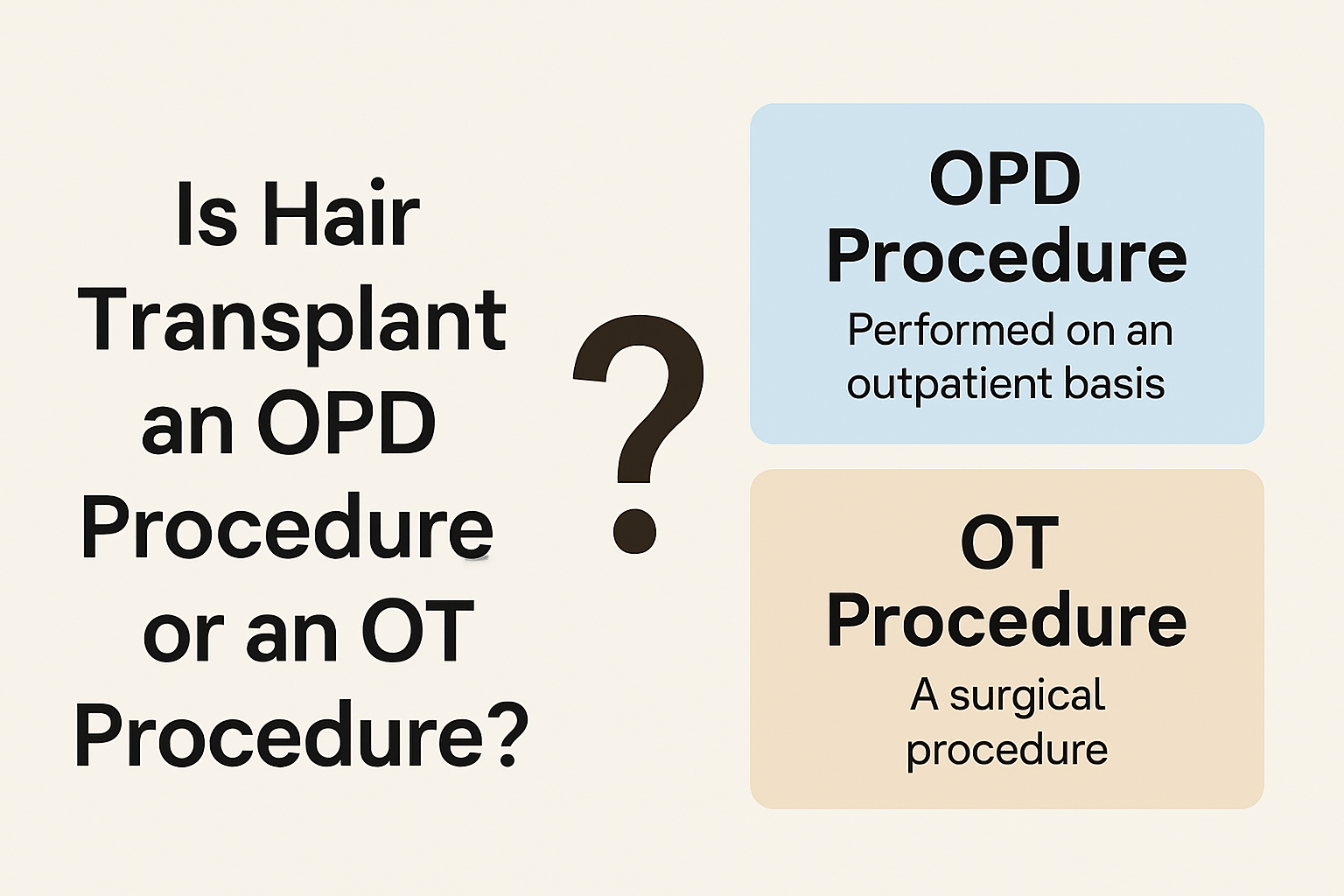Introduction
Hair transplant is one of the most sought-after aesthetic procedures in the world today. But a common question among patients — and even some practitioners — is:
“Is hair transplant an OPD procedure or an OT procedure?”
While it is performed on an outpatient basis, medically and legally, it is classified as a minor surgical procedure that must be done under Operating Theatre (OT) conditions.
What Is an OPD Procedure vs OT Procedure?
| Term | Meaning |
|---|---|
| OPD (Outpatient Department) Procedure | A procedure performed in a clinic without surgical incisions, typically diagnostic or non-invasive. |
| OT (Operating Theatre) Procedure | Involves surgical intervention, anesthesia, incisions, bleeding, risk of infection, and requires sterile protocols and monitoring. |
Hair transplant falls into the OT category because it involves:
- Local anesthesia
- Skin incisions (for graft extraction and implantation)
- Minor bleeding
- Risk of infection
- Surgical tools requiring sterilization
Medical Textbook References
- 📘 “Hair Transplantation” – Unger & Shapiro (5th ed.):
“Hair restoration is a surgical procedure, performed under strict sterile conditions similar to minor OT setup.” - 📘 “Procedural Dermatology” – Nouri (Springer):
“All aesthetic procedures involving anesthesia and incisions must be performed in OT-compliant facilities.” - 📘 “Dermatologic Surgery” – Robinson et al.:
“Hair transplantation, though outpatient in nature, must be performed with OT standards to minimize risk.”
Legal & Regulatory Requirements in India
As per the National Medical Commission (NMC) and Clinical Establishments Act:
- Hair transplant must be done in an OT or OT-compliant minor procedure room.
- Emergency resuscitation equipment, biomedical waste disposal, and trained staff are mandatory.
- Performing hair transplant in salons or unregistered clinics is illegal and punishable.
International Guidelines
Globally, the standards are consistent:
- In the US (FDA) and UK (GMC/CQC), hair restoration is considered a surgical outpatient procedure, and must follow minor OT guidelines.
- The International Society of Hair Restoration Surgery (ISHRS) requires sterile, regulated clinical environments for ethical practice.
Why This Distinction Matters
❌ Marketing it as an OPD procedure may mislead patients.
⚠️ Complications like infections or anesthesia reactions must be managed in a facility equipped with OT protocols.
✅ Choosing an OT-compliant clinic ensures safety, legality, and better outcomes.
Key Takeaway
Hair transplant is an outpatient (day-care) procedure in terms of hospital stay — but medically and legally, it is a minor surgery that must be conducted in OT or OT-like sterile conditions.
📌 FAQs
Q1. Can hair transplant be done in an OPD room or salon?
No. Legally and medically, it must be performed in an OT-compliant setup due to surgical nature and risks.
Q2. Why is OT setup necessary if it’s done under local anesthesia?
Because it involves incisions, blood, and sterilized tools — all of which require surgical standards.
Q3. Is it illegal to do hair transplant outside a hospital?
It is legal only if the clinic is a registered medical establishment with OT infrastructure and a qualified doctor.
Q4. Is hair transplant considered a major surgery?
No, it is a minor surgical procedure, often performed as day-care surgery under local anesthesia.


